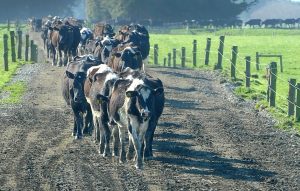
Hank Van Exel calls it “cow-killing weather.”
“I hate saying that but at over 100 degrees, a little thing becomes a big thing in a hurry,” Exel said.
Crews are keeping water troughs full and are providing fans and misters inside barns.
“Cows are different than humans because they have three stomachs, so they generate a lot more heat than what we do,” Exel said.
A few degrees means the difference between life and death.
“If we’re at 80, they are at 85-86,” Exel said. “If you can imagine what it’s like when it gets up to 110.”
He’s lost about a dozen due to heat this year and has 100 more on a watch, monitoring their food and water intake through computerized collars.
“Just like a human, you’re not as hungry, you’re drinking a lot more water,” Exel said.
And that means milk production goes down.
Typically, one cow produces 100 pounds of milk a day.
“We’re about 2.5 to 3 pounds down per animal, so that’s about 6,000 pounds of milk a day,” Exel said.
With the record number of triple-digit days, Exel uses record amounts of energy to keep them cool during Flex Alert periods designed to conserve energy.
“We’ve already been told we’re using more power than we should be, but what can we do? This is when we need it the most,” Exel said.
Four generators and a water truck are on standby in case of rolling blackouts.
It’s all hands on deck to keep the cows comfortable.
“This afternoon I’ll have people just roaming around looking for cows in distress,” Exel said. “We’ll bring them and we’ll literally soak them down and put them under fans.”

























